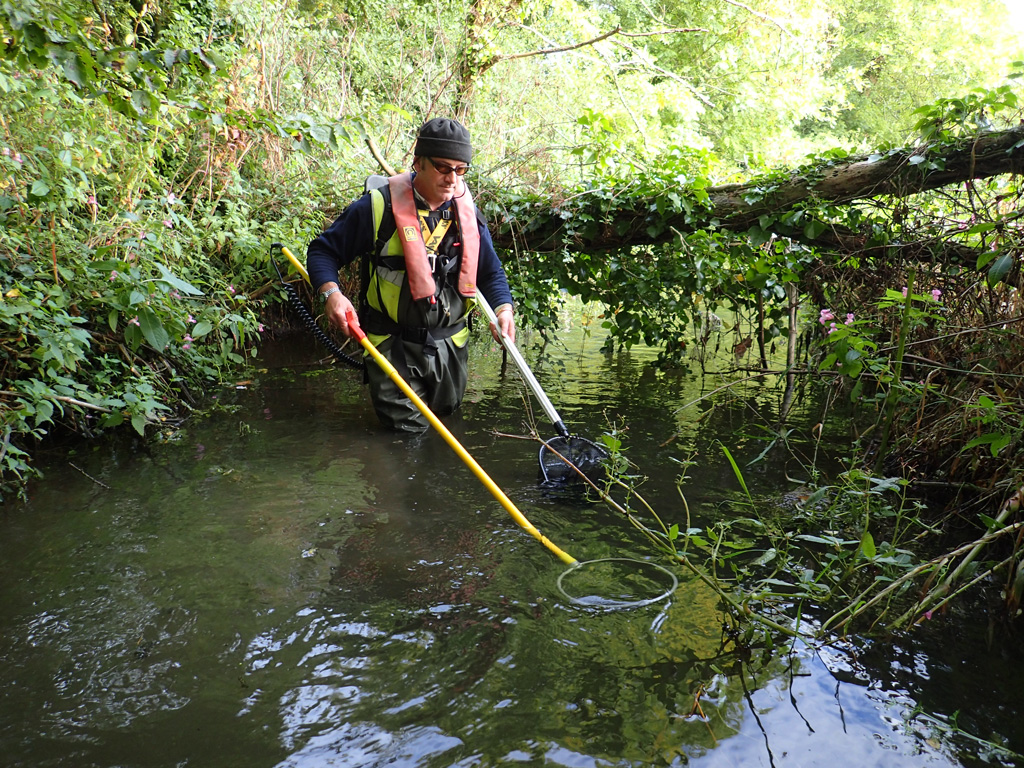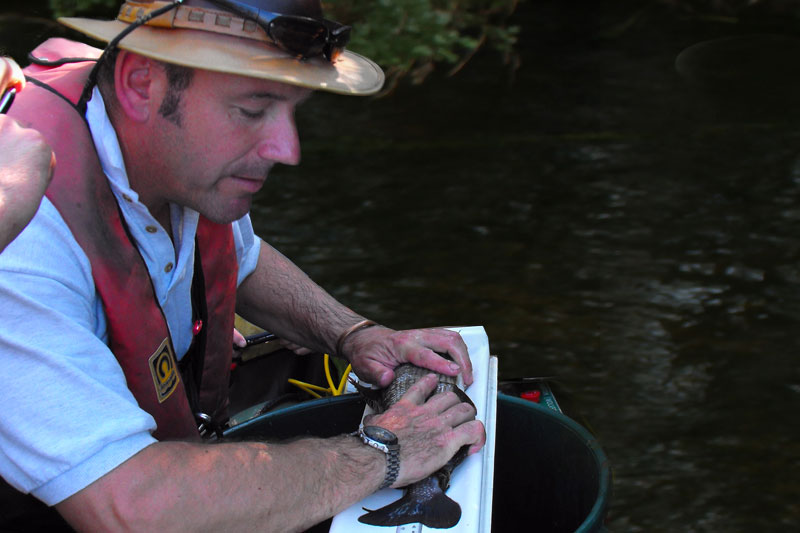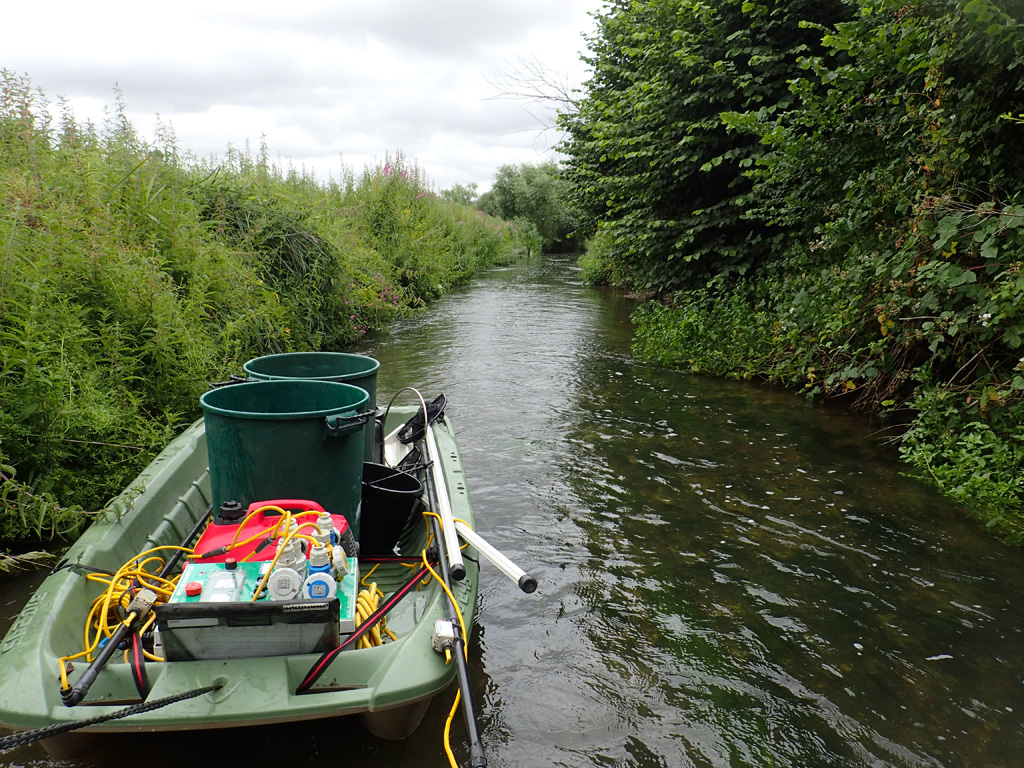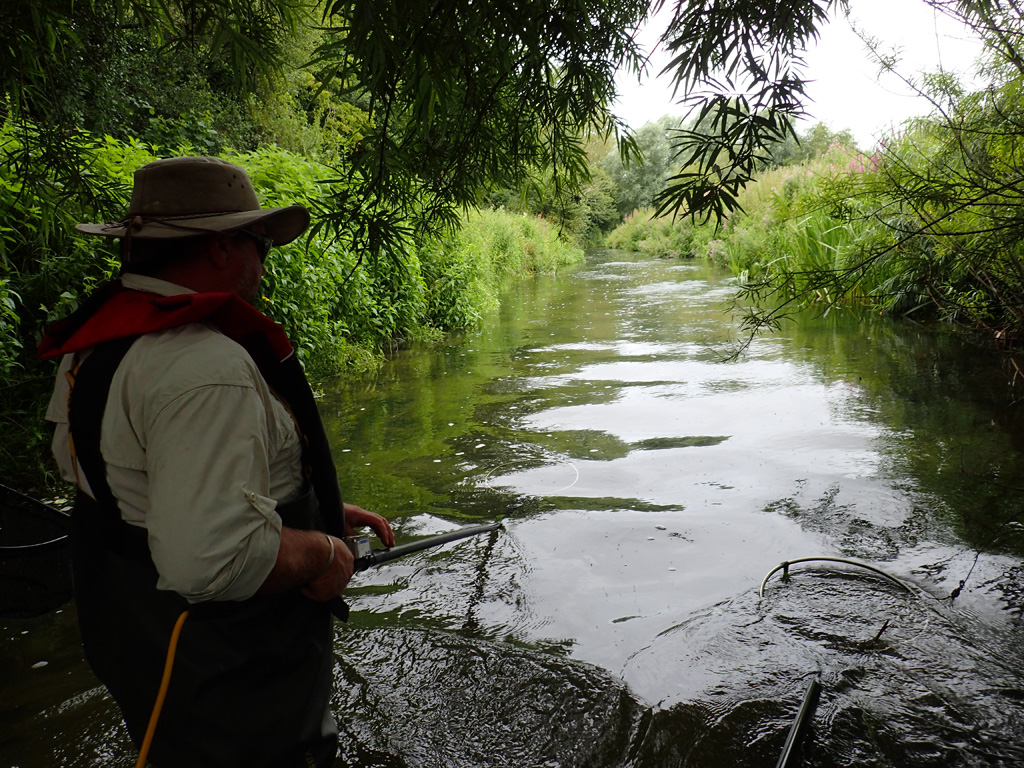CPUE fish surveys are usually undertaken where the collection of semi quantitative or quantitative data is not practical due to the size of the watercourse, or factors such as high flows and water depth prevent the effective use of stop nets. The CPUE method is designed to collect a sub-sample of the fish species present in sufficient numbers to identify the population composition, species range, length frequency data, age composition and growth rates. Areas are fished using either conventional back pack or boat wade techniques in a specific area, or by boating long sections of river. The effort or time taken fishing is then recorded and catch rates per minute calculated.
Back pack CPUE fish surveys can also be carried out and are predominately used for sub-sampling small areas and identifying the presence or absence of certain species. If repeated in the same location at a similar time of year, it can provide a useful indication of the relative abundance of species and provides a spatial overview of the catchment. The advantage is it is a very mobile sampling technique, capable of fishing large areas of shallow water habitat in a short time period, and is particularly useful for the capture of salmon and trout parr on shallow, fast flowing areas.
Long reaches of rivers are CPUE surveyed from an electric fishing boat using two anodes in a down-stream direction. Electro fishing is normally carried out in short, timed runs of 5 minutes, sampling both middle river and marginal habitats. All fish caught are measured by recording fork lengths and scale samples, where required, and the fish are then returned to the water as close as possible to the area of removal. The boat then proceeds downstream for approximately 5 minutes before fishing recommences.
This is repeated throughout the reach, thus reducing the chance of recapture, and the data collected using this method is representative of the length of each reach sampled. During each of the 5 minute runs, the numbers of each species observed, but not actually captured, are recorded using a logarithmic scale. The log abundance recorded in the reaches supports the actual numbers caught and provides a good guide to the method’s efficiency in a variety of habitats and river conditions.
The use of an inflatable boat with a shallow draught allows a diverse range of habitats to be monitored, including fast shallow areas, carriers, side channels and backwaters. This increases the chance of capture of species that have specific habitat requirements. The most important factor with this method is that a large enough subsample of the population is captured to identify population structure and age composition.




